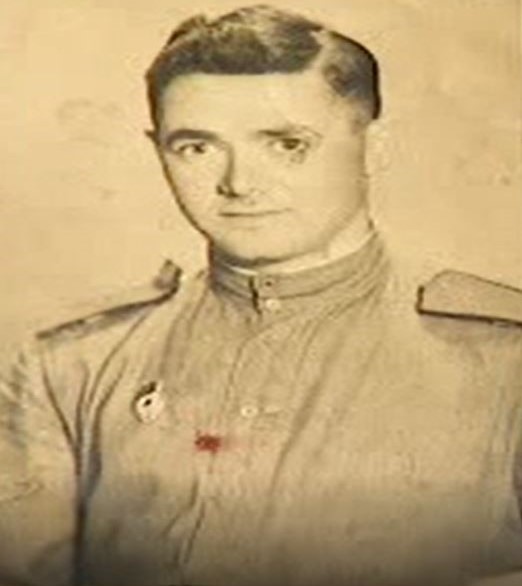Avram Shifris was born in 1916 in the village of Trylisy, 7-8 kilometers south of Fastiv, Ukraine, as one of four children. His father Moisei (Moyshe) was a tailor; he was self-employed until 1926, and then joined a garment workers' cooperative. Amid the civil war in Ukraine in 1919-20, and the attendant pogroms, the Shifris family moved to Bila Tserkva, some eighty kilometers southwest of Kiev. The family was religiously observant, and spoke Yiddish at home. In 1931, Avram finished seven classes of Yiddish school and went to work at a factory, but later continued his studies at a Ukrainian school. In 1936-39, he studied agronomy at an agricultural institute. In September 1939, Abram was drafted into the Red Army. In February 1940, having completed a commanders' course, he received the rank of sergeant. He went on to serve as a sapper in a sapper battalion of the 169th Rifle Division.
The Soviet-German War, which broke out in June 1941, caught Avram Shifris on the new western border of the Soviet Union, west of Lvov. The invasion caused Avram's division to retreat. His sapper battalion lagged behind the rest of the division. As a result, in September 1941 it was surrounded by the enemy. The soldiers scattered, and Avram and his Jewish friend decided to try to cross the Dnieper River and rejoin the Soviet forces. On the way to the Dnieper, Avram was identified as a Jew, detained by the collaborationist police, taken to a jail in Bila Tserkva, and slated for execution. On the next day, Avram and a group of other inmates were taken to a pit, which was already full of dead bodies. During the massacre, Avram fainted and fell into the pit, unharmed by the bullets. During the night, he got out. Since this was his native town, which he knew well, he was able to escape.
In November 1941, after two months of wandering in the German rear, Avram finally managed to cross the Dnieper, being ferried over in a boat by a Ukrainian fisherman. He then rejoined the Soviet army. Amazingly, Avram had managed to preserve some of his ID documents in his left boot (usually, Jewish stragglers would try to get rid of all their papers). He showed them to the counterintelligence officer, thereby shortening his screening process. Avram continued to serve as a sapper. In 1942-43, he changed several military units. On one occasion in 1942, he was shell-shocked, and spent some time in a hospital. In early 1944, Avram Shifris was transferred to the 3rd Ukrainian Front. He saw action in southwestern Ukraine, and then in Bessarabia, Romania, and Yugoslavia. In early 1945, he was transferred to Hungary. He took part in the battles for Székesfehérvár and Budapest, and was shell-shocked for the second time. After a hospital stay, he fought near Vienna. He met V-E Day sixty kilometers northwest of that city.
After the end of the war, in June 1945-June 1946, Avram Shifris served at the commandant's office in the town of Jánosháza. In 1946, he was discharged from the army, and returned to Bila Tserkva. Avram's parents and sister had managed to evacuate, and survived; his older brothers Shimen and Isaak had been drafted in 1941, and were killed in action. Avram worked at a sovkhoz (state-owned farm) as an agronomist. He retired in 1986.







